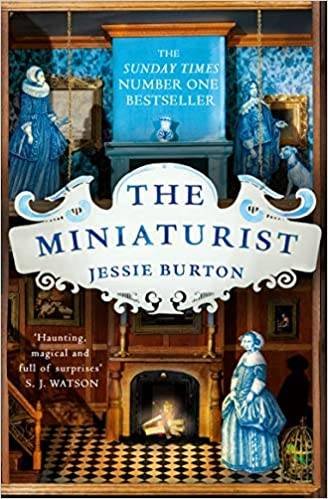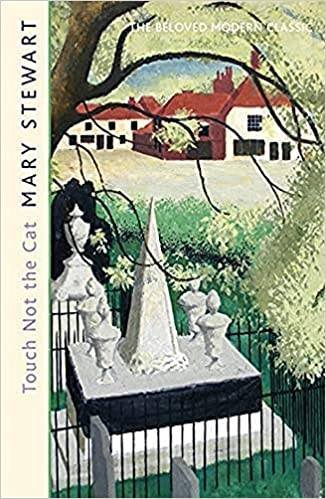Home » Book Reviews » Jessie Burton » The Miniaturist by Jessie Burton
Possible spoilers ahead
I admit I was drawn to this book by the intriguing title and the picture of the dollshouse on the front, though that then also slightly annoys me that I have fallen for a sales technique! There were many aspects of the book that I found fascinating, particularly the details of life in 1660s Amsterdam, but there were brutal bits that disturbed me, and I’m not sure The Miniaturist’s mystery was fully explained which I found a little frustrating seeing as this was the title of the book.
The book didn’t initially grab me, probably because it’s set in Amsterdam and the Dutch words used felt so utterly foreign to me, and I also couldn’t shake off my apprehension for the young 18 year old Nella sent to the Brandt home to be wife to 39 year old Johannes, I was worried she would be abused and it would be difficult reading. I also felt apprehensive for her beloved parrot Peebo who she took with her, and if he would be hurt by Johannes’ stern unwelcoming sister, Marin, or the servants, Cornelia and Otto. So at the beginning of the book I felt more duty-bound and a little daunted to continue reading it, rather than excited to pick it up (and to be honest, I felt the same at the ending too with how brutal things were becoming). But the book did begin to grab me more with Johannes’ gift of a dollshouse for Nella, and her ordering pieces for it from The Miniaturist but then strange extra unordered pieces arriving from The Miniaturist which seemed spookily to be exact replicas of Nella’s real life. The two model dogs for the dollshouse have the correct dark patches on their fur as the real dogs in the house, Nella is also sent a cradle which echoes Nella’s desire to become pregnant and her frustration at the unlikeliness of this happening, two chairs that are an exact match for the ones in the hallway of the house, domestic items such as irons and baskets and mops and pots and pans and cutlery and cushions, the same pictures as are hanging on the wall in the house, books, a tiny golden key hanging on a ribbon, a model of a boardgame, and a miniature model of the dollhouse. Nella is also sent models of people, of Johannes, of Nella holding an empty birdcage the day after she loses her parrot, of the maid Cornelia, of the servant Otto, of Marin secretly pregnant before anyone else knows this, of Frans the man Marin loved, of Agnes his wife who is jealous of Marin, of Jack who is Johannes’ lover, of Peebo the now lost parrot, and of Arnoud who Nella hopes will buy their sugar and save their livelihood. It seems that this Miniaturist knows Nella’s life and house extremely well, and Nella feels like she is being watched by The Miniaturist somehow and is fearful of her, but also feels that she has somehow been chosen by The Miniaturist who is trying to guide her. Nella looks repeatedly at the notes The Miniaturist includes with her miniatures, ‘Things can change’, ‘Every woman is the architect of her own fortune’, ‘I fight to emerge’, ‘The turnip cannot thrive in the tulip’s patch of soul’, trying to read guidance into them. Also the sign over The Miniaturist’s premises of ‘Everything man sees he takes for a toy’. Nella ends up hoping The Miniaturist is actually protecting her by prophesying what will happen and that there is a plan for her to follow, and she keeps looking at the models in the hope they will give her a sign as to how things will turn out.
Other strange things happen in relation to The Miniaturist’s models, such as Marin throwing the model of Jack out of the window in her frustration with the risk Johannes is putting them all in by continuing this relationship, but the following day the model is sat outside the house and Nella brings it back in and places it again in the dollhouse. Also when Jack comes to the house with a knife, angry that he has been stopped from seeing Johannes, and kills Johannes’ dog, Nella later finds a mark on the model dog in exactly the same place as the wound inflicted by Jack. Also several times, Nella has letters in her pocket intending to post these through The Miniaturists’ door, but she finds these letters have disappeared from her pocket and The Miniaturist then carries out Nella’s request so appears to have taken the letters from Nella’s pocket somehow. This also seems to have happened with a miniature model of the dollhouse that Nella was carrying in her pocket and which then disappeared, and a woman, presumably The Miniaturist, then later puts this on Marin’s grave.
Johannes is gay, so my apprehension for Nella and her possible brutal experience as a new wife has gone, to be replaced by an apprehension of what might happen to Johannes in 1660s Amsterdam if his secret is discovered. His secret has been known for a long time by his sister, Marin, and the maid, Cornelia, and the servant, Otto, who all try to keep him safe, and it seems the decision to have Johannes marry was to protect him and his secret. Marin seems more caring and protective and vulnerable when she acknowledges this secret to Nella. She became a more interesting character after this, as it is hard to imagine how such a devoutly religious and self-denying and controlling person such as she is could defend the lifestyle of her brother, it made me wonder how long and hard she tried to convince him otherwise before realising this was who he was and there was no choice of changing, but her desperate protectiveness of him and his secret shows how vulnerable she realises he and they and their reputation and status in society are, she still does plot and hope for some kind of ‘normality’ though with arranging Johannes’ marriage to Nella and trying to encourage him to father an heir with her, she appears desperate in her aims for this ‘normality’, desperate for the secret not to destroy their public reputation and their business and their rich lifestyle, as well as desperate for his safety, but her desperation is also tragic as it demonstrates her powerlessness as a woman not able to work and earn money herself though she is clearly clever and knowledgeable about the business, and also the powerlessness that all their security is in Johannes’ hands and he seems not to see the risks his behaviour is putting their security in.
Johannes’ choice to rescue a negro slave, Otto, and employ him as a servant is intriguing, and the family’s support and defence of him in the face of their neighbours’ fear and suspicion and disapproval, and this in the time of sugarlands in the Caribbean the slave trade.
However there is danger and brutality in this society as there is a kind of militia, called the burgomasters, who dictate rules like banning figures such as gingerbread people or toys, as these are deemed to be Catholic idolatry. People in the city seem fearful of the burgomasters’ dominance and power and rules, they sound almost like a secret police with vicious punishments and sentences, particularly with any behaviour seen as different such as being gay, and neighbours are encouraged to watch neighbours and report on them to the burgomasters.
And then everything seems hopeless as the end of the book approaches, I was fast becoming convinced there was no chance of a happy ending and was having to force myself to continue on with the book. And sure enough there is no happy ending, with Johannes imprisoned and tortured and brutally killed, and with Marin’s secret pregnancy revealed and her giving birth and dying, and Nella and Cornelia left with a mixed-race baby to deal with, and Otto chased out of the city. It all felt quite sad and depressing. And, very frustratingly, the details of The Miniaturist are not explained, who she was and how she knew the intimate secrets of Nella’s household, whether she was warning Nella and the other women so they could take avoiding action or if she was dictating what happened to them and somehow causing this to happen. The Miniaturist’s father said she is called Petronella and that she receives letters from many women asking for guidance, but I don’t see how she learns their secrets just from these letters. And I was also puzzled at whose funeral it was it at the start of the book, I am guessing it was Marin’s but then is it The Miniaturist watching the funeral and if so then why, and why does she place the miniature model of the dollhouse on Marin’s grave when Marin didn’t seem that connected with the dollhouse, or was it actually Marin that The Miniaturist was trying to help and guide rather than Nella? I can’t help being frustrated that all this isn’t explained, I almost began to wonder if the author had a great idea about a dollhouse and pieces for it mysteriously and poignantly appearing, but no full plan of how to give a solution for this. One review of the book that I read said the dollhouse could be lifted out of the story and there would be no loss, and I can see this is true as the main points in the story would still happen without the dollshouse. So does the dollhouse then seem a bit of a gimmick, a good picture to put on the front to sell the book?
I was interested in the theme of secrets throughout the book, both in the community and within families. The ‘secret police’/burgomasters were alarming and disturbing, they reminded me of Franco’s regime in Spain with neighbours telling on neighbours and anyone different being punished, though it’s more alarming to consider that Franco’s regime and atrocities were in the 1940s and how those views could still be supported in such recent times.
The details of life in 1660s Amsterdam were interesting, and also how more forward-thinking the people apparently were compared to England and France at that time, with women in Amsterdam being allowed to walk in the streets alone, and married couples allowed to hold hands in public, and also interesting with Amsterdam’s history with the seas and how they have conquered it to build land on it but there is always the fear they live with that the sea will eventually claim it back. I also like the houses having signs of animals and someone’s address being given by this, eg The Miniaturist is at the sign of the sun on such-and-such a street, someone else is at the sign of the fox, I thought that was charming.
So I have mixed views on this book, I found it interesting and imaginative but also disturbing and frustratingly puzzling. I see there is a sequel, perhaps this will provide answers to the puzzles but I am slightly cautious about reading it in case there is more brutality and unhappiness.

























